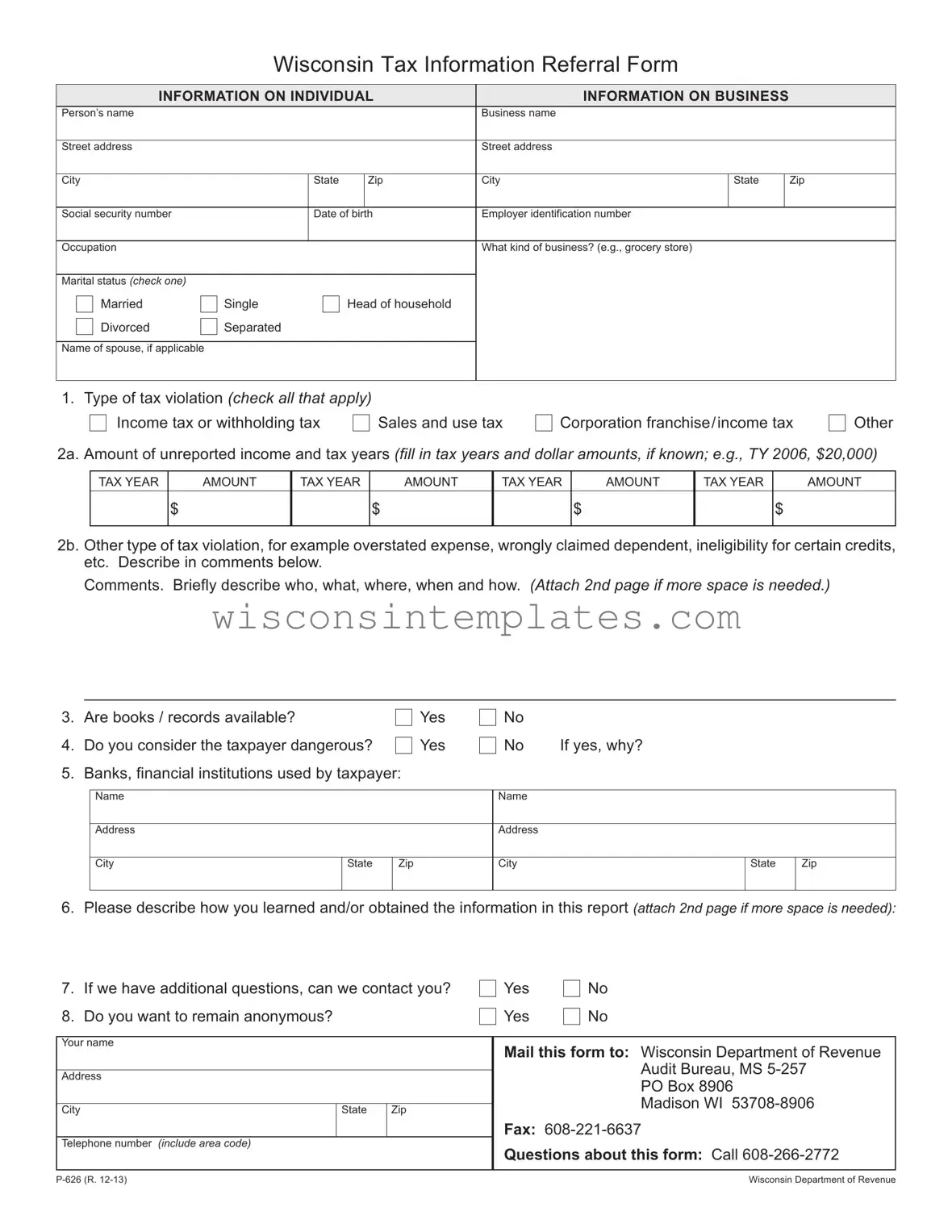The Wisconsin P 626 form serves as a crucial tool for reporting tax violations, providing a structured way for individuals and businesses to disclose pertinent information to the Wisconsin Department of Revenue. This form collects essential details about the person or business involved, including names, addresses, and identification numbers. It also prompts users to specify the nature of the tax violation, whether it involves income tax, sales tax, or other types of tax discrepancies. Furthermore, the form asks for specifics regarding unreported income and the tax years affected, allowing for a clear understanding of the situation at hand. Additional sections encourage the reporting of other tax-related issues, such as overstated expenses or improperly claimed credits. Moreover, the form inquires about the availability of records and whether the taxpayer poses any danger, ensuring that the Department can assess the situation appropriately. By providing a way to remain anonymous, the P 626 form promotes a safe environment for reporting, while also allowing for follow-up if needed. In essence, this form plays a vital role in maintaining tax compliance and integrity within the state of Wisconsin.
